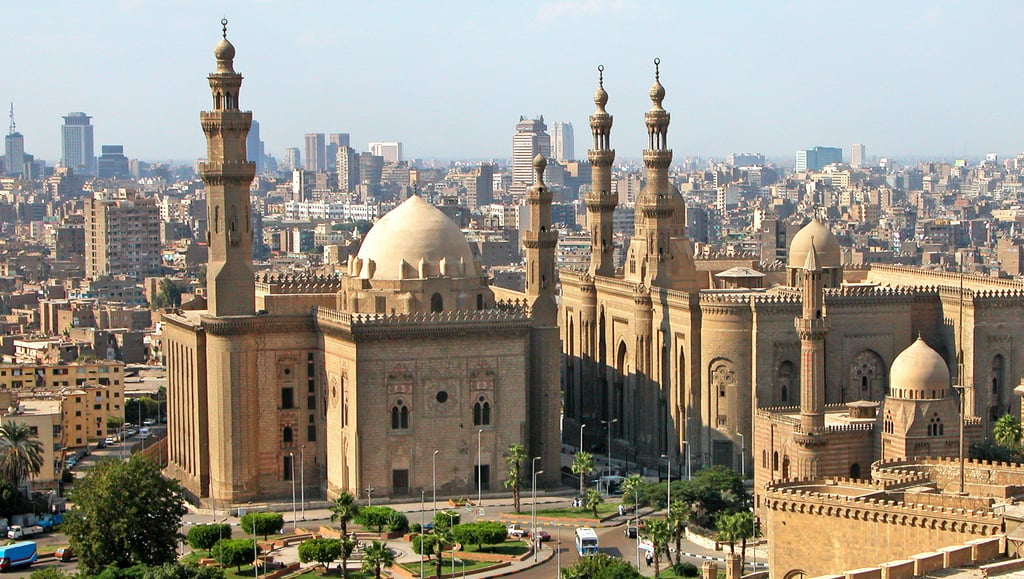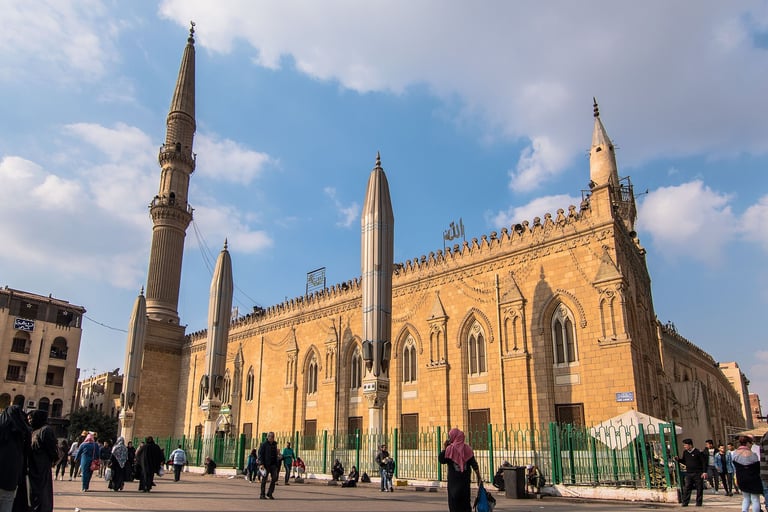Cairo – Markets, Minarets & Morning Tea
Wander through Cairo’s vibrant markets, towering minarets, and timeless tea rituals—a city where history hums in every corner.
DESTINATIONS
Jetsclusive
7/7/20254 min read


Cairo: Markets, Minarets & Morning Tea
Cairo never seems to sleep. From the rhythmic calls to prayer echoing between minarets to the tangled alleys of its markets and the low hum of morning gatherings over hot mint tea, this city pulses with a living history. Every sunrise, Cairo wakes as both ancient and alive, blending its past with daily traditions. For travelers looking beyond the pyramids, this is where Cairo’s true magic unfolds—in the relentless buzz of souks, the shadows of old mosques, and the sweet steam rising from glass tea cups in centuries-old cafés.
The Marketplace Pulse: Exploring Cairo’s Bazaars
Step into a Cairo bazaar and you step into an orchestra of color, chatter, and scent. The most famous, Khan el Khalili, might remind you of a well-worn treasure chest, overflowing with silver, spices, and stories whispered through generations.
Khan el Khalili: History and Architecture
Khan el Khalili has been Cairo’s economic and cultural heart since 1382. Sultan Djaharks el-Khalili built it as a caravanserai, turning the neighborhood into a crossroads for merchants and pilgrims. Its covered lanes, still standing centuries later, betray their Mamluk origins—think intricate brick patterns, arched passageways, and wooden mashrabiya windows that filter the strong Egyptian sun.
Wandering Khan el Khalili’s narrow corridors, you’re tracing steps trodden by sultans and poets. The architecture is more than a backdrop; it’s a living exhibit of medieval craftsmanship, sparking the imagination with every carved motif and hidden courtyard. This market isn’t just for shopping—it’s a UNESCO-protected portal to Cairo’s past.
Souk Shopping: What to Buy and How to Haggle
Shopping here is a sport. But unlike in some tourist traps, vendors expect—and invite—bargaining. Start by offering half of the asking price and smile while you negotiate. Confidence, patience, and a friendly manner will open more doors than aggressive bartering.
What not to miss in the souks:
Handcrafted silver & jewelry: Local artisans handwork filigree and bold stones into unique designs.
Alabaster carvings: These gleaming objects make stunning keepsakes.
Brass lamps: Many stalls glitter with intricate lanterns, their patterns casting magic when lit.
Handwoven carpets: Vibrant colors and traditional designs give each rug its own story.
Spices: Heaping sacks of cardamom, cinnamon, and cumin perfume the air.
Spotting genuine goods takes a sharp eye. Trust shops with visible workshops or piles of raw materials. If a price feels “too good to be true,” keep walking.
Compare Private Jet Pricing To Cairo Powered By Villiers Jets - Trusted by 1000+ flyers worldwide
Sights, Sounds, and Flavors: Immersing in Market Culture
Everything comes alive in Cairo’s markets. Vendors shout greetings, children dart between tourists, and the rich scent of coffee twists through the bustle alongside grilled kebabs and stacks of honey-soaked baklava.
Street performers strum ouds or recite old tales, their rhythms blending with the clink of copper and laughter. The energy is both wild and inviting.
Etiquette in the souks:
Dress modestly (shoulders and knees covered).
Ask before taking people’s photos.
Respect religious sites, especially during prayer hours.
When you need a break, duck into El Fishawi Café, a labyrinthine teahouse that’s been open for over 250 years. Grab a table, order sweet mint tea, and watch Cairo whirl by. People-watching here feels like theater—one in which everyone plays their part.
Minarets and Spiritual Heritage: Cairo’s Historic Skyline
Cairo isn’t called the “City of a Thousand Minarets” just for show. Its skyline is spiked with tall, slender towers, each one a voice in the city’s daily conversation with the divine. These minarets rise above ancient mosques, witnessing both worship and the passage of time.
Iconic Mosques: Al-Azhar, Al-Hussein, Sultan Hasan
Al-Azhar Mosque: Established in 970, Al-Azhar is more than a place of worship—it’s a beacon of learning for the Muslim world. Its five minarets pierce the sky, and the marble courtyard hosts scholars from every corner of the globe.
Sultan Hassan Mosque: This 14th-century giant is celebrated for its massive stone walls and delicate stucco. Step inside and you’re swallowed by silence, the scale humbling even those used to grand cathedrals.
Al-Hussein Mosque: Built in 1154, it sits near Khan el Khalili, thick with worshippers and legends. Non-Muslims may not enter, but the exterior alone tells centuries of stories.
These mosques aren’t just landmarks—they anchor neighborhoods, set rhythms for daily life, and reflect shifting tides of history and faith.
Medieval Urban Design and Influence on Modern Cairo
Islamic Cairo still shapes the city’s skeleton. Medieval city planning groups marketplaces, schools, and mosques, their domes and minarets forming neighborhood centers even as skyscrapers push onto the skyline.
Al-Muizz Street, once the literal backbone of old Cairo, still buzzes with activity. Palaces, fountains, and religious schools stack side by side, echoing a time when communities revolved around shared faith, learning, and commerce. Modern life hums along the same tracks, proof that good design crosses centuries.
Morning Tea Traditions: Cairo’s Café Culture
In Cairo, mornings begin and end with tea. More than just a drink, tea is a handshake, an icebreaker, a way to pause and connect before the day sweeps you away.
Historic Cafés and Famous Gathering Spots
El Fishawi Café stands out as an icon. Tucked deep in Khan el Khalili, it’s drawn artists, politicians, and dreamers for over two centuries. Other staples include Café Riche and Groppi, each steeped in its own kind of nostalgia.
Inside these cafés, the city’s stories spill out:
Mint tea or karkadeh: Sweet, aromatic, and endlessly refilled.
Sheesha pipes: Locals and travelers mingle, their conversations weaving through flavors of apple and rose.
Sticky pastries: Small bites perfect for sharing and lingering.
Cafés aren’t just pit stops—they are community anchors, where time loosens, and everyone is welcome to join the table.
Tea, Conversation, and Community
Tea rituals thread through Cairo’s days. Friends meet before work, elders review the headlines, students swap gossip, and business deals start or close over steaming glasses.
There’s always room for another at the table, whether it’s a familiar face or a curious visitor. Stories pour as freely as tea, and Cairo’s warmth is never far behind.
Conclusion
Cairo is restless but rooted. The markets shimmer with old secrets and new bargains. Minarets watch over faith and memory, tying centuries together. Tea brings life down to a slow simmer, letting conversation bloom. These experiences hold the soul of Cairo. If you want to know the city, listen for the call to prayer, wander a narrow alley at noon, watch a teapot steam in the crowded morning air—then you’ll feel Cairo’s heart beating, steady and strong.


Luxury
Explore the world of private aviation and travel.
support@jetsclusive.net
© 2025. All rights reserved.
